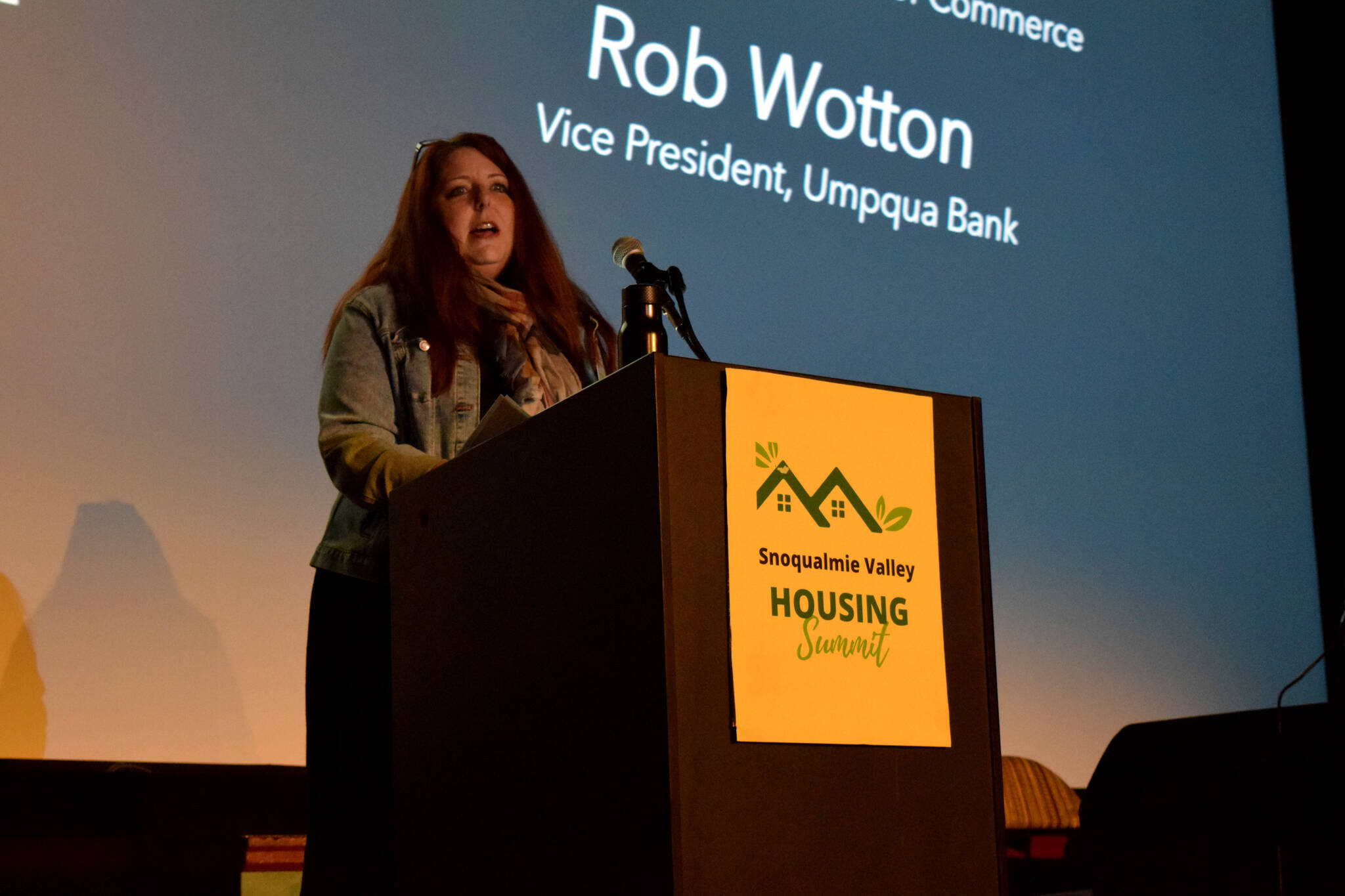As Rob Wotton welcomed leaders to the North Bend Theatre on Sept. 22 for the sixth Snoqualmie Valley Affordable Housing Summit, a renewed sense of urgency was in the air.
Ever since Wotton held his first affordable housing summit out of Umpqua Bank nearly seven years ago, there has been a growing interest in addressing a lack of affordable housing. That’s especially true in wake of the pandemic, when housing costs rose at unprecedented levels.
But while the fervor to bring more affordable housing to the Valley may be at an all-time-high, the ability for city leaders to tackle those challenges remain complex and elusive.
“It’s not easy,” Wotton, a Snoqualmie City Councilmember and housing advocate, told the crowd in opening remarks at the summit. “I think all of us can agree it’s not easy, but we have to try. That’s why we’re here today.”
Wotton joined Kelly Coughlin, CEO of the SnoValley Chamber of Commerce, in co-hosting this year’s summit. The two brought together nine speakers and representatives from a handful of cities and nonprofits from across the county to discuss strategies to help introduce more affordable housing.
They also announced plans for a new affordable housing task force in the Valley, made up of Valley representatives from the pass to Carnation, who will meet quarterly for the next year before presenting their findings.
“We have to come together as a community,” Wotton said.
Much of the Valley’s efforts are focused on workforce housing, as lack of housing for workers has contributed to a prolific labor shortage that has worsened with the pandemic. Nearly everyone — including the school district, city government and a range of local businesses — has struggled to hire.
“Not only are businesses concerned about finding employees,” Coughlin said, “they are struggling to keep their employees.”
Workforce difficulties are far from the only challenge. According to data shown by Wotton, a lack of affordable housing is creating a demographic change in the Valley, with young residents, ages 18-30, unable to afford to move in and elderly residents, those 65 and over, unable to afford to stay.
Emily Arteche, community development director for the city of Snoqualmie, said the issue of affordable housing is being felt across the Pacific Northwest, even in places such as Coeur d’Alene, Idaho, that were once thought of as affordable. She said cities are still playing catch-up in building housing units following the 2008 recession.
“Snoqualmie is no different,” she said. “We’re right in the middle of feeling that squeeze … there’s just a massive shortage of housing.”
North Bend City Administrator David Miller said housing costs present concerns about economic development in the Valley. An economic development consultant working on an action plan for the city told Miller a lack of workforce housing will be the city’s biggest future challenge for economic development, he said.
While housing prices have doubled over the last five years, Miller said, wages have not grown to meet that need. That comes as a huge detriment to a region whose economy is largely dependent on tourism and service industry.
Housing and wages
The Valley has some income-restricted housing, and several future affordable housing projects are in the pipeline. Both North Bend and Snoqualmie lack what is needed, especially for those working the lowest wage jobs.
At the local level, most of the control cities have over their access to affordable housing is through zoning laws and streamlining the permitting process.
Financing affordable multi-family units often requires pulling revenue from several sources and placing a new building close to services, like transit, to make it eligible for government subsidies.
But getting those subsidies has become more difficult during the pandemic, said Tim Locke, Director of Housing Preservation, Management and Acquisition at CIRC Living.
Income-restricted housing is usually marked by its relation to the Area Median Income (AMI). A unit sold at 30%-60% AMI is designated for low-income earners. Anything less than that is designated as “extremely low income.”
Wages for businesses looking to hire in the Valley are generally between that 30-60% figure, but even people making 80-120% AMI can’t afford to live in the area, Locke said.
Since the pandemic, Locke said, public officials have pointed a majority of subsidies and tax credits toward developments that serve those earning less than 30% AMI, making it more of a challenge to target other AMI ranges. There also are few resources for anything above the 60% AMI mark.
“It’s increasingly hard to serve people between 30 and 80% [AMI],” he said. “The opportunities to develop it are scarce, land is scarce, the tools the city has are scarce, the sources to get funded are hard to come by and competitive.”
There are other challenges too, namely community resistance. Miller, of North Bend, said there is often a “strong aversion” to housing projects that are high in density and height, despite these projects having the highest return on investment.
Jeff Dade, community development director for nonprofit Forterra, said affordable housing projects often face opposition, even as growth remains inevitable, but emphasized inclusivity and that the decision being made today will impact the next generation of young people looking for housing.
“Historically, there’s barriers and they look like us, homeowners, folks that are established generally don’t want folks who are not established coming in,” he said. “I’m hoping you are kindred spirits who want to do something different.”


